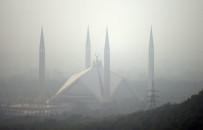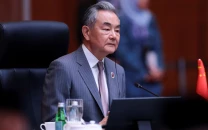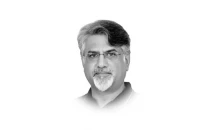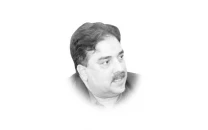Redrawing maps or fixing governance?
Constitution deliberately makes altering provincial boundaries difficult

It is one of Pakistan's most enduring questions. Should the state bring government closer to the people by carving out new provinces, or by finally empowering local institutions that already exist in the Constitution but rarely in practice?
Both approaches claim to offer representation, equity and better service delivery. Yet both also carry risks if driven by politics rather than planning. The challenge is not simply whether to add new lines on the map or strengthen councils at the grassroots, but how either option can overcome decades of centralisation, patronage and weak governance.
The proposal for a "West Punjab" province, carved out of Faisalabad and Sahiwal divisions, has revived the old debate on restructuring Pakistan's federation. For some, it promises fairer representation and a check on Punjab's dominance. For others, it looks like political opportunism dressed up as reform.
This is not the first time Pakistan has tried to redraw its map. The One Unit scheme in the 1950s aimed to create parity between East and West Pakistan but ended up deepening resentment. The merger of FATA with Khyber-Pakhtunkhwa in 2018 was designed to integrate, but years later the region is still struggling with transition. The lesson is simple. Changing boundaries without consensus and preparation risks creating more problems than it solves.
The Constitution deliberately makes altering provincial boundaries difficult. A two-thirds majority is required in both houses of Parliament and in the assembly of the affected province. The idea is clear. Provinces are not just administrative units on a map, but identities tied to politics, resources and belonging. Shifting them without care destabilises the federal balance.
The timing of these proposals also raises questions. New provinces are often promised with great fanfare before elections but quietly shelved after. All major parties have dangled the South Punjab card, but none delivered when in power. Is the push about genuine reform, or simply another slogan to mobilise voters in neglected regions?
Advocates of new provinces argue that smaller units mean closer, more responsive government. Yet Pakistan's governance crisis runs much deeper. Local governments remain non-existent in most parts of the country. Development money is routed through MNAs and MPAs rather than elected councils. Without strong systems of delivery, will new provinces actually bring services closer to the people, or will they just create new chief ministers, new assemblies and the same old centralisation?
That does not mean demands for provinces lack merit. South Punjab, for instance, contributes heavily to Punjab's economy but receives a smaller share of development spending. For millions in Bahawalpur or Multan, the issue is not abstract. It is about decades of neglect. A new province might be one way to correct those inequities. But will it deliver change, or merely rearrange administrative furniture?
Another question rarely asked is whether Pakistan can afford more provinces. New assemblies, bureaucracies, police forces and courts require money. When the state struggles to manage the four provinces it already has, would creating more only stretch the system further, or could it finally deliver on the promises being made?
Other countries offer mixed lessons. India expanded from 17 to 28 states after decades of agitation, but only after a commission studied the issue in detail. Indonesia's division of Papua weakened separatists yet fuelled ethnic tensions. Kenya's devolution widened representation but drained vast sums in salaries and overheads. The lesson is clear. Redrawing maps changes little without institutions, resources and accountability.
Pakistan's debate suffers from the absence of an impartial mechanism. Instead of independent commissions and serious studies, decisions are too often shaped by political deal-making or by pressures outside the democratic process. There is no forum to ask whether these provinces are viable, whether they will worsen ethnic divides, and how resources will be shared under the NFC Award. An independent federal reorganisation commission could answer these questions. By assessing demographics, revenue capacity and administrative feasibility, it could move the debate from rhetoric to evidence.
The choice should not be framed as either new provinces or stronger local governments. Both can be pursued, but with the right sequence and design. Local institutions must be strengthened so that new provinces, if created, have a foundation of accountable governance. Similarly, fiscal federalism must be rationalised so that more provinces do not simply mean thinner slices of an already shrinking pie. New provinces may at times be necessary for representation and equity. Local governments are essential for delivery and accountability. The two are not substitutes. They are parts of the same puzzle.
Pakistan needs to treat the question of provinces not as an election slogan but as a serious national conversation. Just as India created a States Reorganisation Commission to rationalise its map, Pakistan too must study its own realities before rushing into constitutional change. This is not about rejecting the idea of new provinces, nor about dismissing the value of devolution. It is about asking whether change will fix the system or simply multiply it.
The call for new provinces is not going away. It reflects grievances that cannot be ignored. But it also poses risks if handled through political expediency rather than structured reform. The real question then is this: do we want to redraw maps for short-term politics, or design reforms that truly empower citizens and strengthen the federation?
















COMMENTS (1)
Comments are moderated and generally will be posted if they are on-topic and not abusive.
For more information, please see our Comments FAQ